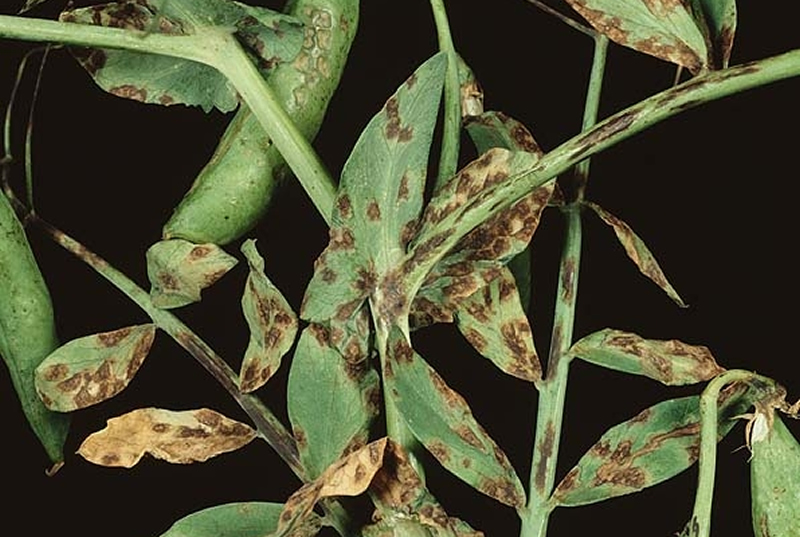
Becky Ward, PGRO principal technical officer, advises on disease control, and on pea moth ...
Combining Peas
Responses to treatment can be expected where unsettled weather conditions continue to favour disease development.
Grey mould (Botrytis cinerea) is attracted to wet flower petals which, after pod set, either become detached and lodge in the leaf axils or remain stuck to the developing pods. The disease can penetrate and cause rotting of stems and pods. This has a direct effect on yield and can cause blemishing of the produce.
Leaf and pod spot (Mycosphaerella pinodes and Ascochyta pisi) causes infection after a prolonged period of wet weather and may appear at a slightly later stage than Botrytis. It causes purple-brown flecking of leaves and blackening of the stem before lesions develop on pods.
Botrytis and leaf and pod spot cannot be successfully controlled once established, and preventative sprays are more useful where weather conditions are unsettled. Because of the need to prevent development of disease - and if the outlook is for changeable weather at the first pod set stage - then sprays should be applied at this time. A second spray should be applied 10–14 days later if weather conditions remain unsettled.
Fungicides such as azoxystrobin, metconazole, boscalid + pyraclostrobin (Signum), chlorothalonil + cyproconazole (Alto Elite) or chlorothalonil + pyrimethanil (Walabi) will give useful control of leaf and pod spot and Botrytis in the crop and can give yield increases when applied during flowering and pod set.
Powdery mildew may affect late maturing crops, and the disease may delay maturity. Cyproconazole + chlorothalonil (Alto Elite) will give useful control of powdery mildew at the second spray. Sulphur (Thiovit Jet) has an Extension of Authorisation for Minor Use for peas to control powdery mildew.
Vining peas
Sclerotinia is favoured by warm, wet conditions and infection occurs during flowering. Sections of stems become bleached and wilt or collapse. The fungus produces fluffy white mycelium over the infection site and black, elongated sclerotia develop within the stems or on pods. These contaminate harvested produce.
Where the disease is a regular occurrence a preventative spray at first pod will reduce the risk of contamination by sclerotia. Azoxystrobin and cyprodinil + fludioxinil (Switch) are effective.
For Botrytis in vining peas, preventative sprays should be applied at first pod if unsettled weather is forecast.
Pea moth
Some south eastern areas have reported thresholds for pea moth on 13th June. If a threshold was reached on this date the current forecast spray date for all inland areas is 25th June, and for coastal areas the 26th June.
A threshold is reached when 10 moths are caught in either trap on two consecutive occasions. Crops will not be ready for spraying until first pods are set. Tolerance levels in vining peas are lower and crops should be sprayed at first pod where moths have been caught, even in low numbers, in traps.
